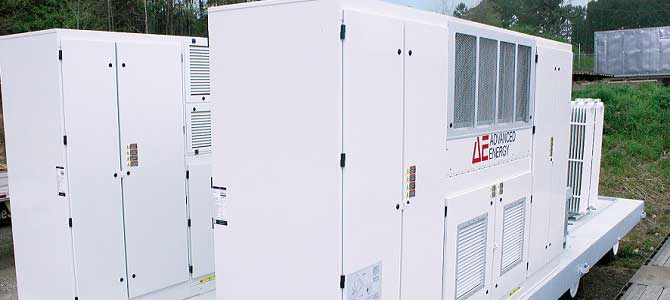And another one gone, another one gone…We called it. It’s a new ball game for the inverter business. Advanced Energy (AE), the #3 inverter manufacturer in the U.S., recently announced its intention to “wind down” its inverter business.
With Satcon’s bankruptcy and SMA announcing its own struggles earlier this year, it is evident that inverter manufacturers are experiencing the pricing compression that module manufacturers have batted against for the past decade.
When considering equipment preferences for our own investments, we count nearly two dozen Tier-1 module manufacturers, as opposed to five or so inverter companies (and we find this to be market with other financiers). Why is it that there are far fewer bankable inverter manufacturers than bankable modules?
For one, engineering and manufacturing modules is a much simpler and more standardized process that is nearly commoditized, with a lower hurdle rate and learning curve as opposed to tech-heavy inverters. All inverters are not created equally; these are highly complicated, highly sophisticated machines that are arguably more important than the modules to which they connect. As opposed to modules, inverters do have moving parts, and they are exposed to a harsher degree of operating conditions, with parts that are more prone to failure but also depended upon to perform
at a high degree of availability.
In addition, inverter manufacturers often have much more intensive service programs, being called upon much more frequently than any other core technology provider, presenting resource demands that are challenging to fulfill sustainably. This is in comparison to module manufacturers who only have a few unique technologies; instead, the majority of module manufacturers compete mostly on marketing and pricing, with little differentiation in the actual product itself.
Module manufacturers were the first to feel the extreme downward pricing pressure from foreign competition. Then, as most low hanging cost reductions were exhausted, inverters became the next target of price compression for the last few years. Foreign companies like Chint and Sungrow are contributing to the same trends in the inverter market, causing a tremendous downward effect on pricing and creating highly competitive conditions in the U.S. While it is a positive news for the industry that all-in project costs have become more competitive, we may continue to see high
quality manufacturers no longer able to sustain profitable business lines.
In the near term, we do not expect consolidation of the inverter business to have a dramatic impact on project development, inverter pricing, or delivery schedules. We project that for the most part, the remaining manufacturers have the ability to scale. This may, however, give investors pause as they reconsider bankable inverters and how to evaluate this properly in light of these changeups.
It is highly likely that recent newcomers will ultimately prove worthy of participating in non-recourse financed projects; the amount of time it takes for the market to gain this comfort in these newcomers will be a key consideration.
The biggest question that remains in light of AE’s news is about servicing the operating inverters still under warranty, and to what degree the warranties will be honored. Since AE is not closing up shop – just “winding down” its manufacturing – we remain optimistic that AE will service the parts or certify a third party to handle for them.
Published with permission from the original publication on SOL SYSTEMS By Sara Rafalson.















Comments